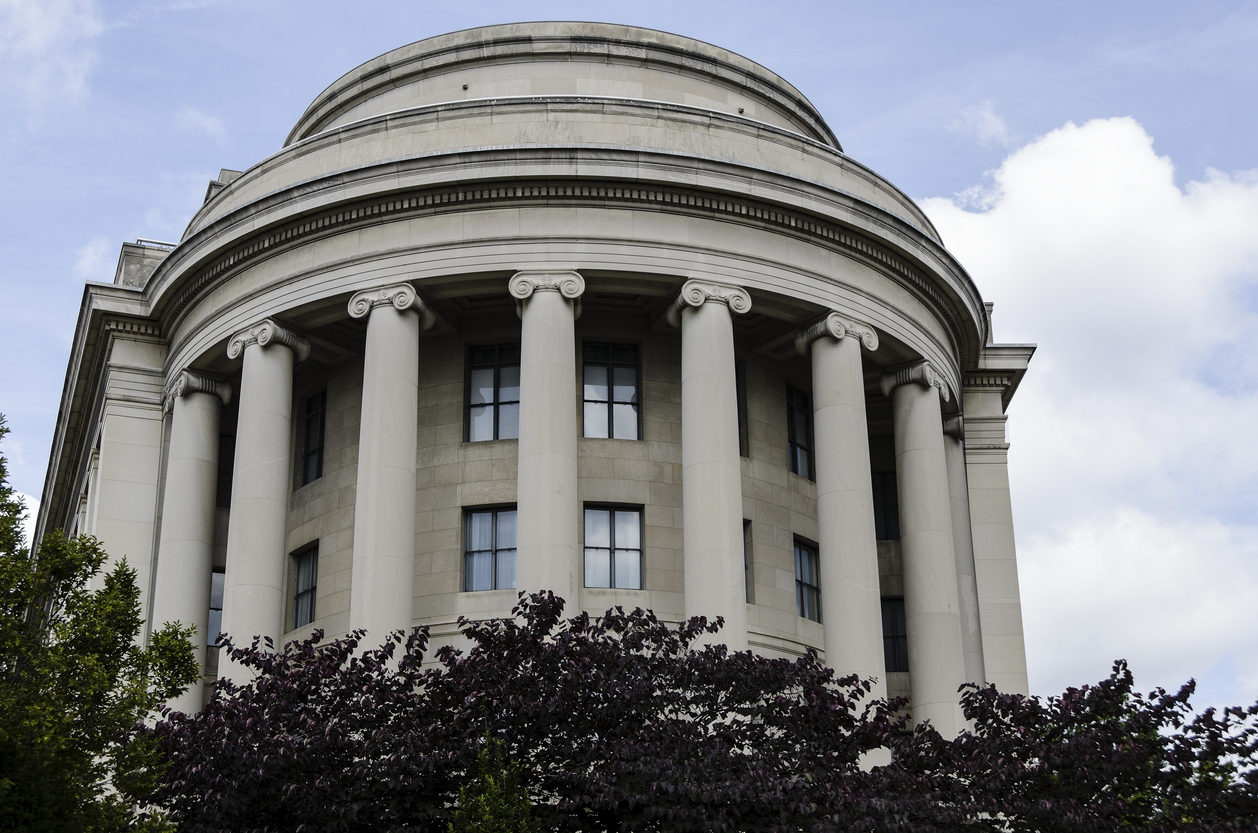
This article provides an overview of the practicalities of conducting a mediation session by Zoom.
1. Practice, then just do it.
Anyone can do it! That’s the moral of this story.
A mediation is scheduled for mid-March of 2020. A week beforehand, having participated in several pandemic-prompted Zoom meetings by then, I announce that the session will be held by Zoom, to maintain distance. To my surprise, everyone agrees.
Truth be told, this is terrifying. Knowing nothing about managing Zoom technology, and sitting in my basement with a laptop and no tech support, I’m on my own. So my wife, Marilyn, gets on her laptop upstairs, and we practice . . . and practice some more.
Then, counsel for one party guesses that help is needed and offers a practice run—and it is most helpful!
Finally, the mediation session arrives—and Zoom works like a charm. We start in a joint session, then move each party’s team into separate Zoom rooms—there are eleven separate computers logged in. Not unlike traditional mediation sessions, we all reconvene in a joint session, and re-separate to the individual Zoom rooms, and continue to switch back and forth between them.
Everyone is forgiving and offers assistance on technical issues—but we make it through, and the case settles!
If it can work for me, anyone can do it!
2. Joint sessions work particularly well over Zoom.
As a specific example, let’s examine proceedings under the new Small Business Reorganization Act—which is part of Chapter 11 of the Bankruptcy Code and known as “Subchapter V.” Subchapter V requires appointment of a bankruptcy trustee and creates a new trustee duty: to “facilitate the development of a consensual plan of reorganization” (11 U.S.C. § 1183(b)(7)).
This new duty creates a mediator-like role for the trustee. It isn’t an entirely neutral role because of the trustee’s other duties, such as investigating the debtor’s conduct, opposing debtor’s discharge, weighing-in on plan confirmation and asset sale issues, and enforcing payment obligations.[1] But, facilitating a consensual result is certainly on the mediator-like spectrum of ADR.
A Zoom facilitation meeting is one step in satisfying this duty. Here’s how it works, with confidentiality limited to what Rule 408 provides—normal confidentiality rules for mediation can’t apply because of the trustee’s various duties. [For a discussion of Rule 408 in mediation, see attached Exhibit A.] Immediately following the § 341 meeting, the debtor, debtor’s attorney, creditors, creditor attorneys, and Subchapter V trustee get together for a Zoom meeting with this agenda:
- Debtor explains the intended action and terms of a proposed plan;
- Creditors explain their views and suggestions thereon; and
- Discussions occur toward reaching agreements.
In a facilitation meeting like this, everyone needs to hear what is being discussed. So, a joint session works best—bouncing back and forth among caucused parties would not work here.
These facilitation meetings, in joint session, can be helpful. I remember going into one such meeting thinking, “There is no way to achieve a consensual plan, based on what’s in the schedules.” But, lo and behold, the explanation by debtor’s counsel under the first agenda item presented a perfectly plausible strategy. And all creditors were immediately on board—they had a lot of questions and were skeptical of debtor’s ability to pull the strategy off, but they were most definitely cheering for the debtor to make it work.
It’s the joint session that makes a facilitation meeting’s three-part agenda successful. And the Zoom-created social distance between participants even helps reduce any discomfort that may exist between disputing parties.
3. Related processes demonstrate that Zoom mediation is here to stay.
Depositions and bench trials with warm-body testimony are also happening by Zoom—everywhere. And like mediations and facilitations, the Zoom technology is working well there too. Here are a couple examples.
a. Deposition
A deposition occurs with the witness, attorneys, parties and court reporter in far flung locations. There are twenty exhibits, with advance copies delivered to everyone by email.
Then, after the witness is sworn and testimony is moving forward, the attorney taking the deposition pulls up one of the exhibits on the Zoom share screen and uses the cursor to highlight a sentence in the exhibit for discussion. After reviewing pertinent portions of that exhibit, the attorney moves through the exhibits, one by one, in a similar manner.
This works well—and the savings in travel time and costs are significant.
It’s my new favorite way of taking a deposition.
b. Bench Trial
Imagine a judge sitting in a courtroom in one city, attorneys sitting in their offices in three other locations across the country, and the witness sitting in an attorney’s office in an entirely different location. Zoom pulls them all together for a bench trial—as if they were all together in the same room.
There are some quirks like dealing with a glitch or two in technology, and what qualifies as “unavailable” under Rule 804 for hearsay purposes? [For a discussion of Rule 804, see attached Exhibit B.]
But the Zoom process works well. And savings in travel time and costs, alone, can be huge.
It’s my new favorite way of doing a bench trial.
Conclusion
Zoom has revolutionized our world, in this distancing-focused environment.
Legal processes, including mediation, are the beneficiaries of such change. And what we are finding is this: the change is incredibly positive and is, therefore, here to stay.
As silver linings go, Zoom mediations seem to be one.
Exhibit A
MEDIATION CONFIDENTIALITY: FEDERAL EVIDENCE RULE 408 LEAKS LIKE A SIEVE
Hypothetical: A Chapter 11 Debtor successfully mediates confirmation disputes with a half-dozen creditors. Now, a hold-out creditor moves for discovery of the mediation communications in an effort to torpedo plan confirmation.
The mediating parties come to realize that their Bankruptcy Court has no local rule requiring mediation confidentiality. And, of course, there is no Federal bankruptcy rule on mediation confidentiality, either.
Uh, oh!
So, the mediating parties set their sights on the Federal rule of evidence that protects confidentiality of settlement negotiations. Hopefully, they think, Fed. R. Evid. 408 (“Rule 408”) will stand in the gap for arguing that their mediation communications are privileged.
Rule 408
Rule 408 prohibits admissibility of the following types of evidence to prove or disprove the validity or amount of a disputed claim or to impeach:
- 1. Promising, or offering to settle; and
- Conduct or a statement made during compromise negotiations about the claim.
The two ideas behind Rule 408, according to its official Notes, are:
- Irrelevance: settlement negotiations may be motivated by a desire for peace or by a multitude of other reasons that have nothing to do with the merits of the case; and
- Policy: confidentiality promotes a policy of favoring the settlement of disputes.
Unfortunately, the evidence protection afforded by Rule 408 leaks like a sieve. Here are some reasons why:
Sieve-like Exceptions
- Enumerated Exceptions. Rule 408 allows the court to admit settlement-related evidence “for another purpose.” Examples provided in the rule include proving a witness’s bias or prejudice or negating a contention of undue delay.
- Judicial Exceptions. Settlement discussions have been admitted to:
- Establish that the threshold amount-in-controversy exists for Federal diversity jurisdiction;
- Determine when a statute of limitations began to run;
- Determine the reasonableness of an attorney fee award; and
- Determine whether a settlement agreement has been performed or breached.
- Discovery Leaks. Sieve-like leaks in the Rule 408 privilege are even more pronounced in the context of discovery.
Fed. R. Civ. P. 26(b) authorizes discovery of any nonprivileged matter that is relevant to any party’s claim or defense. Rule 26(b) is incorporated into bankruptcy contexts by Fed. R. Bankr. P. 7026 & 9014(c).
Based on such discovery-rule language, and since Rule 408 “does not provide a blanket ban” on admissibility, “most courts reject a discovery privilege for settlement-related materials.”[2]
So, the following advice is important: “it is wise to assume that settlement-related evidence will be discoverable”[3] (emphasis added).
Conclusion
Put another way, Rule 408 is a rule that limits admission of evidence—it is NOT a rule that limits discovery of information. Accordingly, it is unwise to rely on Rule 408 for maintaining the confidentiality of mediation information.
Exhibit B
“UNAVAILABLE” WITNESS (UNDER HEARSAY RULES) IN A ZOOM TRIAL?
Many bench trials are occurring these days via Zoom and similar platforms (I’ll refer to all such platforms, collectively, as “Zoom”).
But Zoom trials raise interesting—and solvable—issues. For example, witness availability is a crucial factor in hearsay provisions of the Federal Rules of Evidence. So, what qualifies as witness “unavailability” in a Zoom trial?
1. Hearsay Rules
a. Availability—Irrelevant
Rule 803 says, “The following are not excluded by the rule against hearsay, regardless of whether the declarant is available as a witness.” (emphasis added) Rule 803 identifies 24 such hearsay exceptions, including:
- present sense impression,
- excited utterance,
- then-existing mental, emotional, or physical condition,
- statement made for medical diagnosis or treatment,
- recorded recollection,
- records of a regularly conducted activity,
- public records,
- certificates of marriage, baptism, and similar ceremonies,
b. Unavailability—Required
Rule 804(b) says, “The following are not excluded by the rule against hearsay if the declarant is unavailable as a witness.” (emphasis added) Rule 804(b) identifies five such hearsay exceptions:
- former testimony,
- statement under belief of imminent death,
- statement against interest,
- statement of personal or family history, and
- statement offered against a party that wrongfully caused the declarant’s unavailability.
c. Unavailability—Criteria
Rule 804(a) says, “A declarant is considered to be unavailable as a witness if the declarant” (emphasis added) fits into one of the Rule 804(a) identified categories of unavailability:
- the witness is exempted from testifying because a privilege applies,
- the witness refuses to testify despite a court order to do so,
- the witness does not remember the subject matter,
- the witness cannot be present or testify because of death, infirmity, or physical or mental illness, or
- the witness is absent and cannot be compelled to attend or testify.
None of these criteria apply when a party, in an effort to prevent a witness from testifying, causes the witness to be unavailable.
2. Zoom and Availability.
Zoom raises a new set of issues centering on this question: How do hearsay rules on an “unavailable” witness work in a Zoom trial?
Examples of such issues are these:
- How can a witness be compelled “by process or other reasonable means” (Rule 804(a)(5)) to attend and testify in a Zoom trial?
- What would a subpoena say to compel the attendance of a witness at a Zoom trial?
- When a witness from New Mexico is subpoenaed to testify at a Zoom trial before a court in New Hampshire, can the New Hampshire court issue the subpoena?
- What happens when the witness attempts to attend a Zoom trial but can’t get the technology to work?
Such issues will, undoubtedly, be easily and quickly solved. But until the solutions are identified, witness availability will provide one more set of uncertainties and headaches that a litigator must manage in trial preparations.
Conclusion
Zoom is revolutionizing litigation processes.
One fallout from Zoom changes involves the in-person testimony of a witness at trial—and associated evidence rules on witness availability. I’m sure that solutions to such issues will be simple and easily achieved, but it will be interesting to see the solutions that courts develop.
[1] A Subchapter V trustee’s statutory duties are described in 11 U.S.C. § 1183(b) like this:
(b) Duties.—The trustee shall—(1) perform the duties specified in paragraphs (2), (5), (6), (7), and (9) of section 704(a) of this title; (2) perform the duties specified in paragraphs (3), (4), and (7) of section 1106(a) of this title, if the court, for cause and on request of a party in interest, the trustee, or the United States trustee, so orders; (3)appear and be heard at the status conference under section 1188 of this title and any hearing that concerns—(A) the value of property subject to a lien; (B) confirmation of a plan filed under this subchapter; (C) modification of the plan after confirmation; or (D) the sale of property of the estate; (4) ensure that the debtor commences making timely payments required by a plan confirmed under this subchapter; (5) if the debtor ceases to be a debtor in possession, perform the duties specified in section 704(a)(8) and paragraphs (1), (2), and (6) of section 1106(a) of this title, including operating the business of the debtor; (6) if there is a claim for a domestic support obligation with respect to the debtor, perform the duties specified in section 704(c) of this title; and (7) facilitate the development of a consensual plan of reorganization.
[2] Gerald E. Burns, Admissibility of Settlement-Related Evidence at Trial, American Bar Association, July 31, 2013.
[3] Id.











